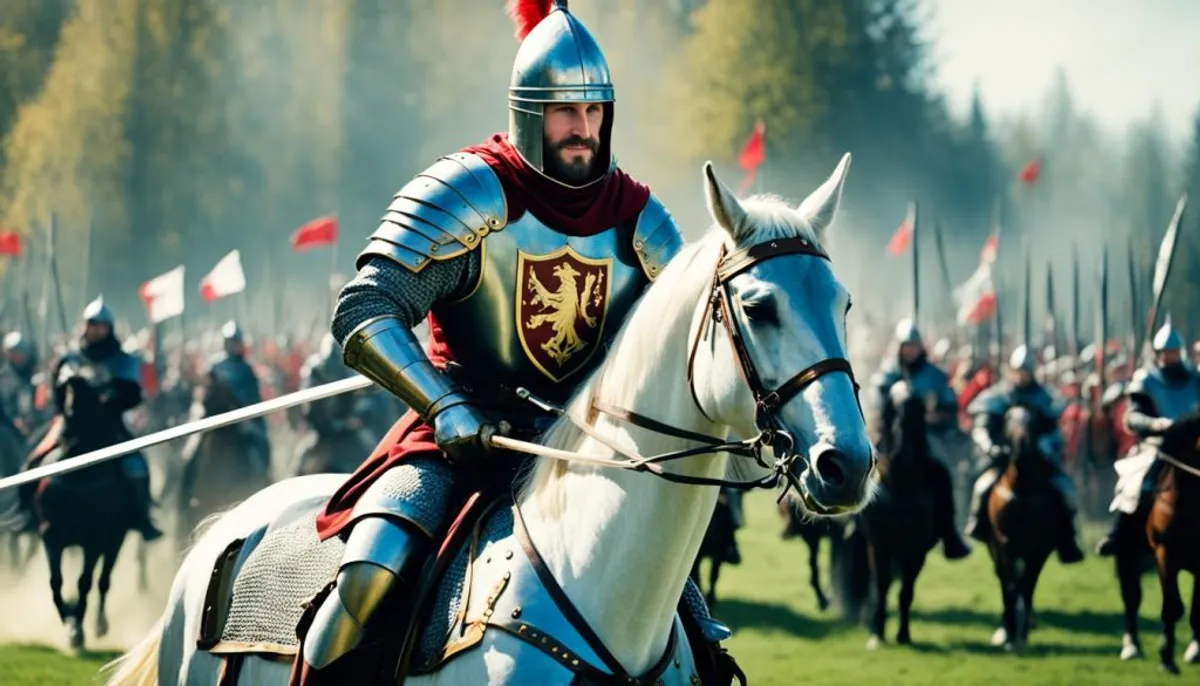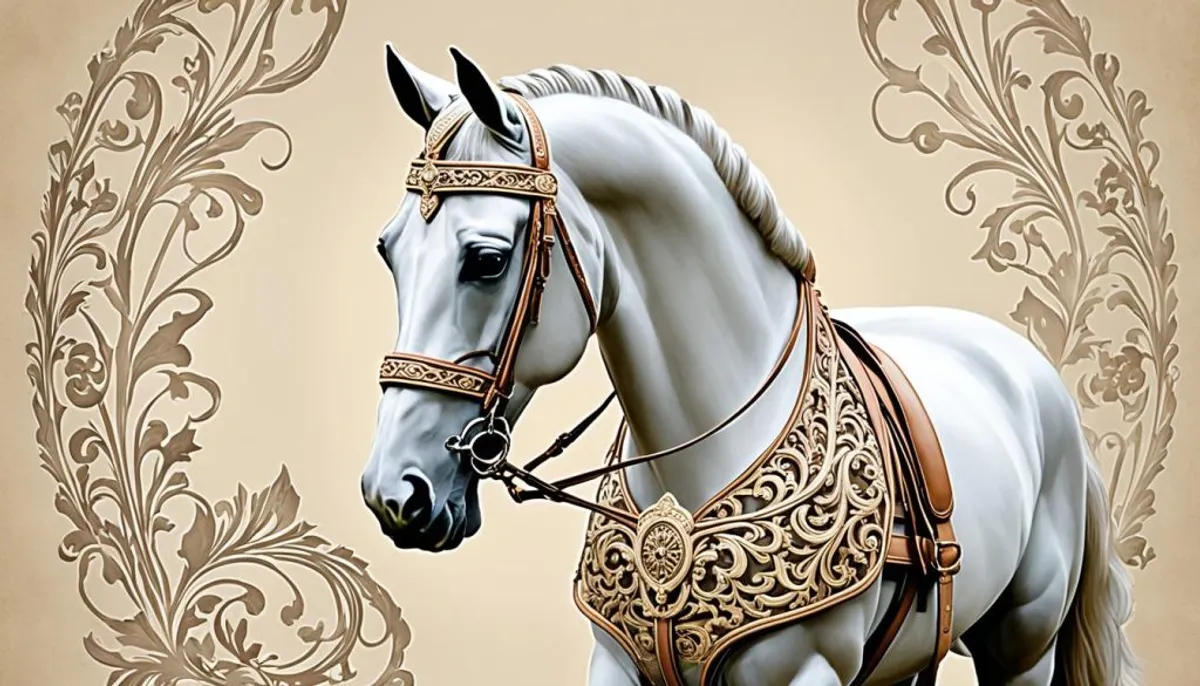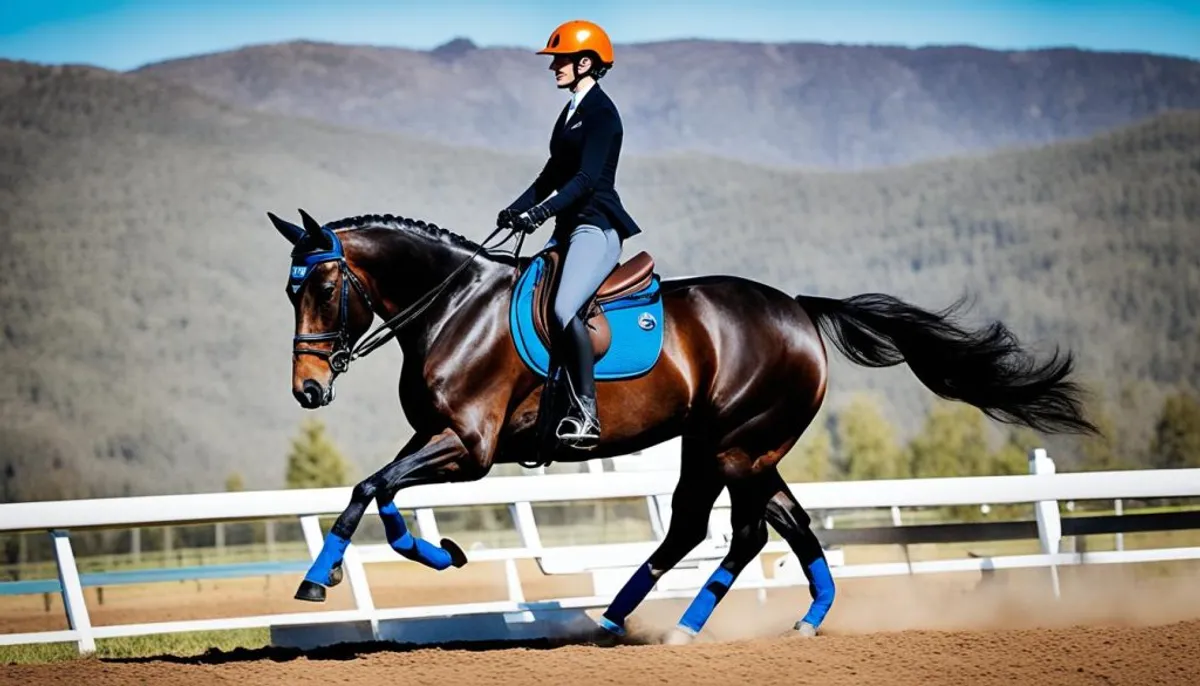Equestrianism dates back thousands of years. It began with the domestication of the horse in the steppes of Central Asia. From there, it evolved into what we know today.
Advancements have touched on technical, aesthetic, and cultural aspects. From military utility to leisure activities, equestrianism has had a significant impact on civilizations.
Throughout history, equestrianism has adapted. It has changed according to the lifestyles, technologies, and cultures of the time. Let’s dive together into this fascinating narrative, from the beginnings of domestication to current techniques.

Key Elements to Remember
- Equestrianism is an ancient practice that has evolved over the centuries
- The history of equestrianism is marked by technical, aesthetic, and cultural advancements
- Equestrianism has traversed eras, adapting to the changes in lifestyles, technologies, and cultures
- From military needs to leisure, equestrianism has shaped civilizations throughout the ages
- This article explores the fascinating history of equestrianism, from its ancient origins to its current traditions
The Origins of Equestrianism: From Horse Domestication to the First Riders
Equestrianism began a very long time ago in Central Asia. People there learned to tame horses. These riders used simple things to guide their mounts.
The Domestication of the Horse in the Steppes of Central Asia
About 4,000 years ago, horses were tamed in the vast expanses of Central Asia. This area was perfect for raising these animals. People could catch and train them.
The First Primitive Equestrian Equipment
At first, riders had simple bridles. These were ropes or pieces of leather to control the horses. They also used leather saddles. These saddles allowed them to move quickly for hunting or fighting.
These very first riders played a very important role in the history of equestrianism. They started a tradition that has been passed down through the ages.
Antiquity: The Rise of Military Equestrianism
Equestrianism was very important in ancient times for warfare. The Greeks and Romans particularly developed ancient military equestrianism. Over time, saddles changed to help riders remain stable. The addition of stirrups greatly improved riders' ability to control their horses and use weapons.
The Evolution of Saddles and the Emergence of Stirrups
The saddles of that time evolved significantly. They transitioned from a simple design to comfortable and effective models. This helped warriors remain stable, allowing them to better wield weapons like the spear. The arrival of stirrups was also fundamental. They provided more support to riders, helping them better guide their horses.
Equestrianism in Greek and Roman Civilizations
Equestrianism was essential in Greek and Roman cultures, especially for combat. Riders of that time were known for their skill. This distinguished them in battles. Ancient military equestrianism truly influenced these civilizations.
| Characteristics | Greek Equestrianism | Roman Equestrianism |
|---|---|---|
| Saddles | Light and maneuverable saddles | Heavier and more stable saddles |
| Stirrups | Appearance of the first stirrups | Wider use of stirrups |
| Weapons | Spears and javelins | Swords and cavalry lances |
The Middle Ages: Equestrianism in the Service of Chivalry
The Middle Ages saw equestrianism become crucial for knights. Special war saddles and armor were created to assist knights in battle.
War Saddles
War saddles were designed to assist the rider. They were wider and deeper than others. They also had higher supports for the rider during battles.
It was essential for knights to be able to use the stirrup. This allowed them to rise and strike harder with their weapons.
Equestrian Armor
Horses were also protected. They had coverings, chainmail, and plates for protection. This kept their head, neck, and chest safe.
Knights wore heavy armor. This defended them well against enemy attacks. Thus, they could fight very effectively with great strength.
All these advancements in equestrianism helped knights dominate warfare. This lasted for many centuries.
The Renaissance: The Refinement of Equestrian Art
The Renaissance profoundly changed the history of equestrianism. It was here that the art of horseback riding reached a new level. Improvements in saddles, stirrups, and techniques were significant.
More Comfortable Saddles and the Aesthetics of Equipment
The saddles of the time prioritized rider comfort. Padded leather provided support and flexibility. The covers, decorated with embroidery, showcased the luxury of the time. Even the spurs followed this trend, becoming more beautiful and sophisticated.
The Influence of Italian and English Equestrians
Italian and English masters of equestrianism dazzled during the Renaissance. They taught new ways to ride and control horses, which were very sophisticated. Their refined style greatly contributed to equestrianism at that time.
This era thus changed equestrianism, making it more enjoyable and refined. More comfortable saddles and more beautiful equipment emerged, thanks to the Italian and English masters.

History of Equestrianism: A Tradition Rooted in French Culture
The French equestrian tradition is rich and deep. It is a key element of French equestrian culture. From the high quality of saddles to elegant equestrian activities, equestrianism has shaped the identity of France.
A perfect example is the French Saddle Company. This brand creates exceptional products, whether standard or custom-made. Its "Made in France" label symbolizes the excellence and talent of French artisans.
The French equestrian culture is also visible in various equestrian activities. Dressage, show jumping, and eventing showcase a balance between tradition and innovation.
| Discipline | Characteristics |
|---|---|
| Dressage | Elegance, precision, connection between rider and horse |
| Show Jumping | Agility, power, technique |
| Eventing | Versatility, endurance, mastery of different tests |
The French equestrian tradition is essential to the history and culture of the country. It illustrates the place of equestrianism in society. This heritage inspires enthusiasts worldwide.
The Contemporary Era: Innovation and Technology in Service of Equestrianism
The 20th century saw the advent of new advancements in equestrianism. Contemporary equestrianism has evolved thanks to technological innovation and the use of modern materials. This has given rise to cutting-edge equipment that enhances the experience for both riders and horses.
Modern Materials and Cutting-Edge Equipment
Saddles, thanks to modern materials, are lighter and last longer. This helps the rider move more easily. Stirrups now offer innovative safety systems. They can detach in case of a fall, thus improving rider safety.
Leisure and Competitive Equestrianism
Today, leisure equestrianism and competitive equestrianism are popular worldwide. Riders use cutting-edge equipment to perform at their best. These technologies have elevated equestrianism to a high-level sport, exciting people from all corners of the planet.

Conclusion
The evolution of equestrian equipment shows how our society has changed. It also speaks to our passion for the horse. From the beginnings with simple saddles to today’s high-tech tools, much has changed.
Each improvement has made the experience of horseback riding better. The advancements aimed to protect both riders and horses more. However, the balance between the past and innovation is crucial.
Equestrianism continues to evolve. We must keep an open mind for new ideas. But we must not forget where this art comes from. The important thing is to move forward while preserving the environment and caring for animals.
FAQ
What are the origins of equestrianism?
Equestrianism began thousands of years ago in Central Asia. It is there that humans started to tame horses. People used simple equipment like bridles and leather saddles.
How did equestrianism evolve in antiquity?
During antiquity, the Greeks and Romans linked equestrianism to warfare. Equipment evolved, becoming more comfortable and secure. Stirrups were invented, helping riders to better hold on and wield weapons.
What was the importance of equestrianism in the Middle Ages?
In the Middle Ages, equestrianism was crucial for warfare. Saddles were specially designed to support the rider. Armor protected the horse and its rider from injuries in battle.
How did equestrianism evolve during the Renaissance?
During the Renaissance, equestrianism became more refined. Saddles were comfortable, adorned with beautiful embroidery. Spurs, too, became increasingly beautiful and sophisticated.
What is the importance of equestrianism in French culture?
The French Saddle Company offers high-end products made in France. These items are crafted by talented local artisans. They symbolize the deep connection between equestrianism and French culture.
How has equestrianism evolved in contemporary times?
The 20th century brought significant technological advancements. Equipment today is lightweight and durable. Stirrups now include advanced safety systems. Equestrianism has become a global sport, with modern gadgets for riders and horses.
RelatedRelated articles



